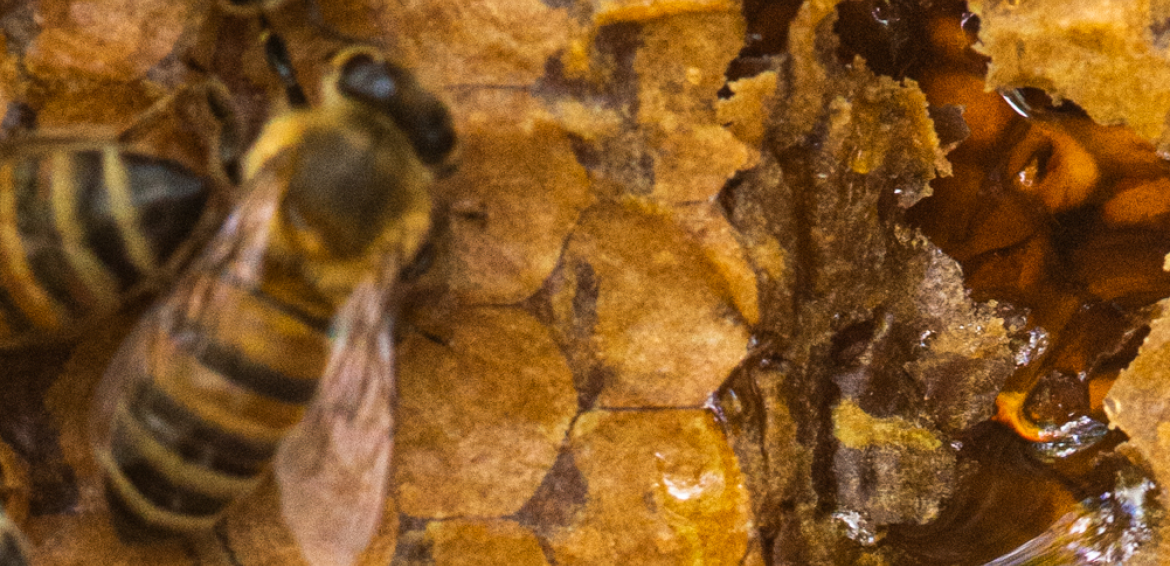blogs
Curiosities
Honey Properties: Learn more about beehive gold
Beeva Brazil 09/07/2020
Honey is a food produced by honeybees from the nectar of flowers. However, it is not only of this substance that it is composed. Other parts of the plant, and bases made by plant species, also make up this rich food.
This gives it a series of properties and benefits, which can be felt when it is used continuously. Do you want to know what properties these are? In this text we explain how honey is produced, its properties and main benefits for the body. Good reading!
How is honey produced?
The bees collect the nectar and transform it, adding substances often coming from themselves and soon after letting it mature in the combs. In this process, they add salivary enzymes and little by little they work until they turn it into honey.
The nectar of flowers has a small amount of sugar and high water content, so bees manipulate it until they obtain a viscous liquid, rich in monosaccharides and with a humidity lower than 20%. Only when it reaches this stage can it be considered a mature honey.
However, before reaching this stage, the small drops of nectar pass from bee to bee and from cell to cell, enriching it with biological constituents. All this is done inside the hive itself.
Therefore, it can be said that bees are the only “alchemists” in nature. After all, they are the only beings that can turn a solution like this into honey.
How much honey can a hive produce?
It is difficult to assess the annual production of a single bee, but it is estimated that a hive produces 20 to 30 kg of honey per year, with a population of approximately 30,000 bees.
What is the composition of honey?
Honey contains approximately 80% carbohydrates (35% glucose, 40% fructose and 5% sucrose) and 20% water, serving as an excellent source of energy. However, honey is also a source of more than 180 substances, including amino acids, vitamins, minerals and enzymes.
Honey Properties: Check out the main ones
Helps in wound healing
Several studies show that honey can be used to suppress bacterial growth, especially on open wounds. In addition, honey soaked in gauze accelerates the healing of burns. Human research has shown that over 50% of wounds healed faster in subjects treated with honey.
Relieve symptoms of gastrointestinal diseases
Honey also relieves diarrhea associated with gastroenteritis by destroying the bacteria associated with the disease. In a scientific research, it was proved that the administration of honey to children over one year of age affected by gastroenteritis resulted in an improvement of 40% of the patients.
Inhibits the proliferation of bacteria
Honey inhibits the growth and proliferation of several bacteria, including: Samonella, Escherichia coli, Shighela and Vibrio cholerae. In research where it was used, its properties also inactivated the growth of Helicobacter pylori, the bacterium responsible for the appearance of duodenal and gastric bacterial ulcers.
Honey prevents various diseases
In addition to the properties mentioned above, honey appears in many scientific researches as an agent in the cure and prevention of diseases. On open wounds, when applied topically, it accelerates healing and prevents infection.
When ingested, it improves the physical or psychological state of tiredness and promotes improvement in anorexia and weight loss, especially in children. In addition, it is also effective in treating constitutional deficiencies such as rickets.
Natural honey has antiviral effects
In addition to all the properties of honey that have already been mentioned, it and other products derived from beekeeping are promising in antiviral treatments.
It has been reported the use of honey in adult patients with lesions caused by herpes, both labial and genital, and it was found that the topical treatment with honey obtained a result similar to that done with Acyclovir.
The difference is that honey presented the results without the side effects reported in patients who used acyclovir, and who reported itching when using the drug. In this case, the honey applied to the wounds caused by the virus was effective in treating the pain and other symptoms caused by the recurrent lesions of the disease.
Last but not least: honey also helps to inhibit the replication of the influenza virus, which causes the flu, exerting its effective elimination.
As you have seen, honey is a food that has fundamental properties for the prevention of diseases. Therefore, including it in the diet is imperative for those who want a more natural and healthy life.
If you liked this article, be sure to follow the novidades do nosso blog to learn more about quality of life, technology and sustainability.
Text adapted from the article “Honey: the gold of the hive”, by the hive products specialist Profa. Dr. Maria Cristina Marcucci. Clique aqui para acessar o material-fonte.






